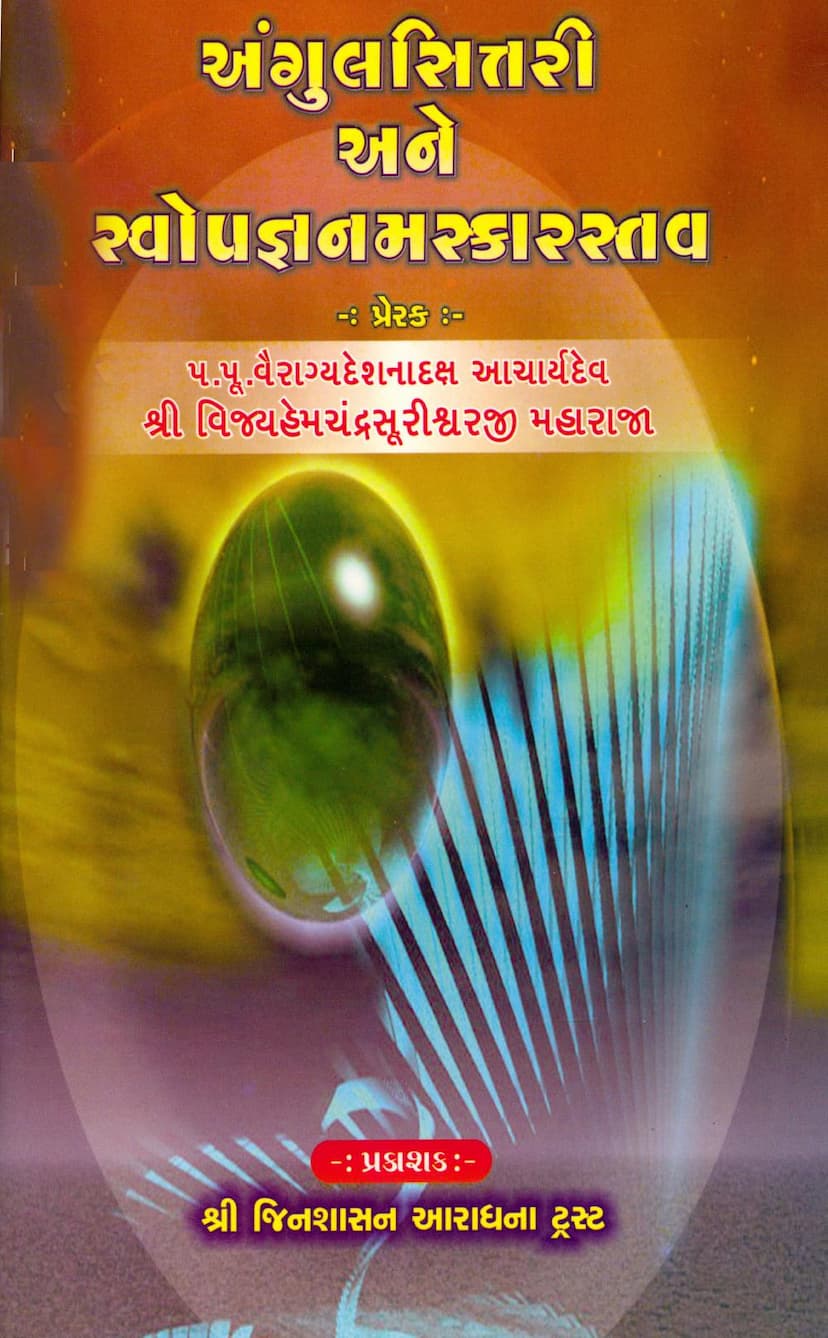Angul Sittari Ane Swopagna Namaskar Stava
Added to library: September 1, 2025

Summary
This document is a Jain religious text titled "Angul Sittari Ane Swopagna Namaskar Stava" (અંગુલ સત્તરી અને સ્વોપજ્ઞ નમસ્કાર સ્તવ). It is presented as a compilation of two works:
-
Shri Angulsattari Prakaran by Muni Chandrasuri (શ્રી અંગુલસત્તરી પ્રકરણમ્ શ્રી મુનિચંદ્રસૂરિ): This section is attributed to Muni Chandrasuri. The text discusses the concept of "Angula" (finger) in Jainism, specifically detailing three types:
- Utsedha Angula (ઉચ્છેદ અંગુલ): A unit of measurement derived from atomic particles. The text elaborates on its derivation through a complex chain of atomic units, culminating in a specific length.
- Atma Angula (આત્માંગુલ): The Angula of a person based on their height. The text explains that this is derived from the physical measurements of humans in different epochs (Yugas). It also clarifies that measurements deviating from the standard height are considered "Atmagulabhas" (false Atmagula).
- Pramana Angula (પ્રમાણાંગુલ): A standard unit of measurement, defined in relation to the Atma Angula of Bharat Chakravarti. The text specifies its length, width, and thickness, and how it relates to Utsedha Angula (1 Pramana Angula = 1000 Utsedha Angula). It further elaborates on the use of Pramana Angula in measuring geographical features like earth, continents, and kingdoms, and delves into complex calculations involving dimensions and units like "Gau" (a unit of distance). The text also discusses the dimensions of cities, houses, and the population within them, based on these measurements, and addresses discrepancies by referencing scriptural accounts. It concludes by stating that the calculations and theories presented are based on scriptural principles and the author seeks forgiveness if any inaccuracies are found.
-
Swopagna Namaskar Stava Vritti by Jinkirtisuri (સ્વોપજ્ઞ નમસ્કાર સ્તવ વૃત્તિ શ્રી જિનકીર્તિસૂરિ): This section is attributed to Jinkirtisuri, a disciple of Somasundarsuri. This work is a commentary on a "Namaskar Stava" (a hymn of salutation). The commentary focuses on the mathematical aspects of the Namokar Mantra (નવકાર મંત્ર), which is central to Jainism. It details four key areas:
- Prastar (પ્રસ્તાર): A method of permutations and combinations to arrange the nine letters/words of the Namokar Mantra.
- Bhang Sankhya (ભંગ સંખ્યા): Calculating the total number of possible arrangements (permutations) of the Namokar Mantra. The text provides a detailed mathematical breakdown of how these numbers are derived, starting from one letter up to nine letters, reaching a staggering number of combinations.
- Nasht (નષ્ટ): A method for determining the specific arrangement (permutation) when its position in a sequence is known.
- Uddisht (ઉદ્દિષ્ટ): A method for determining the position (rank) of a specific arrangement within the sequence.
The book is presented with blessings and guidance from various revered Jain scholars and is published by Jinshasan Aradhana Trust. The preface highlights the effort in re-editing and publishing these ancient texts for the benefit of the Jain community and mentions that the trust has a mission to reprint over 300 old manuscripts. The text also includes dedications and acknowledgments from various individuals and organizations who have supported the publication.
In essence, the book combines philosophical and practical aspects of Jainism, with Muni Chandrasuri's work focusing on precise measurements and geographical descriptions rooted in scriptural tradition, and Jinkirtisuri's work delving into the intricate mathematical permutations of a core Jain mantra, emphasizing its profound significance and the intellectual depth of Jain scriptures.